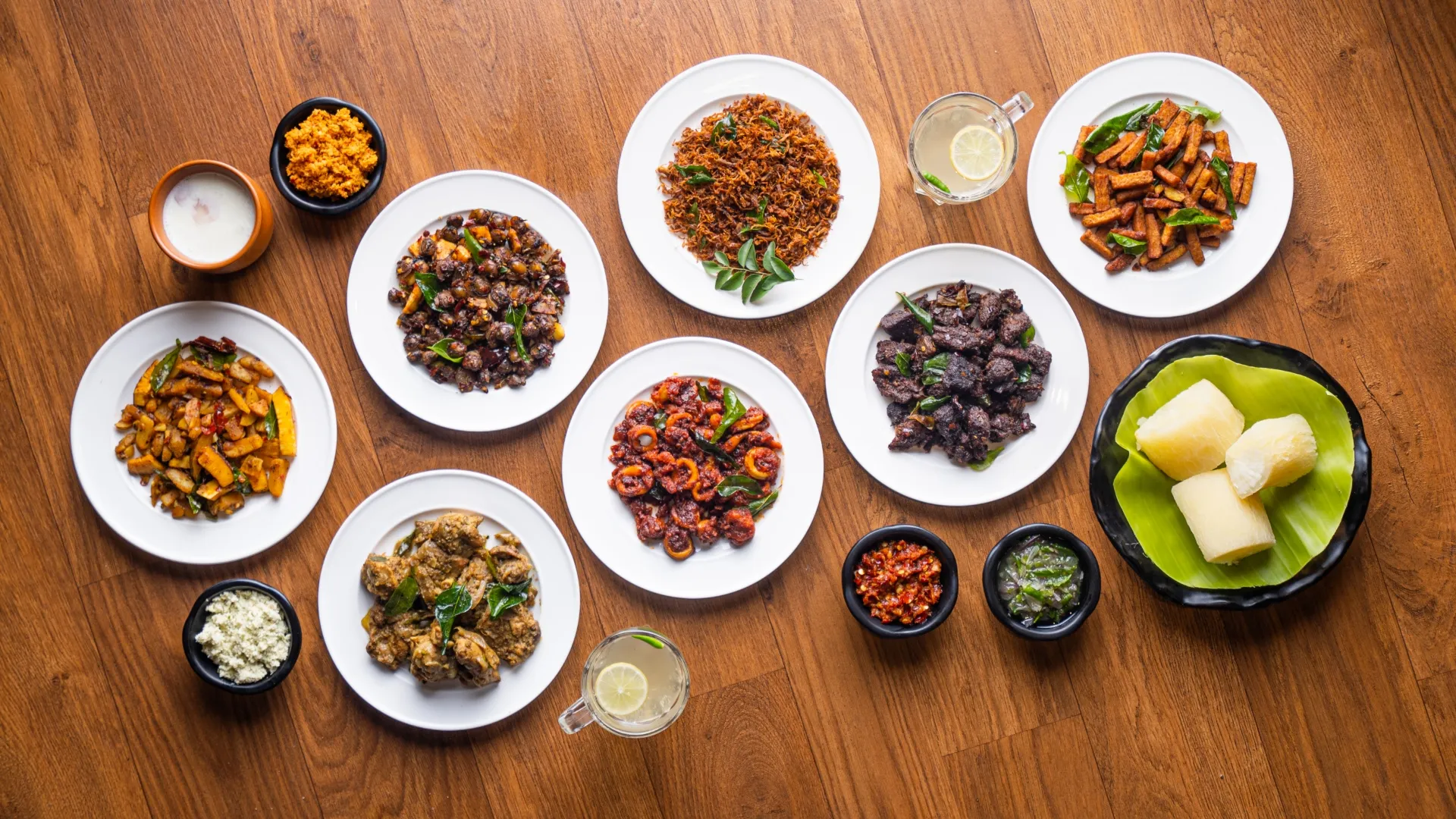From climate-conscious meals to AI-enhanced recipe development, 2025 is shaping up to be a groundbreaking year in the culinary world. As consumer preferences evolve and technology becomes more integrated into our kitchens, we’re seeing exciting innovations, global influences, and a deeper emphasis on wellness.
So, what’s sizzling on the stovetop this year? Here are the top food trends of 2025 that everyone from home cooks to seasoned chefs should have on their radar.
🌱 1. Climatarian Cuisine: Eating for the Planet
Sustainability continues to dominate the food landscape in 2025—but this year, it’s all about climatarianism. Climatarian eaters prioritize foods that have a low carbon footprint, such as seasonal produce, regenerative grains, and locally sourced items.
Trending Ingredients:
- Ancient grains like millet and fonio
- Mushrooms as meat alternatives
- Seaweed and kelp (for both taste and ocean health)
Why It Matters:
Consumers are more eco-conscious than ever, using food choices to combat climate change. Restaurants and brands are responding by labeling menus with CO₂ impact ratings and offering more plant-forward options.
🤖 2. AI in the Kitchen: From Recipes to Robots
Artificial intelligence is no longer limited to tech labs—it’s now a culinary co-pilot. In 2025, AI is transforming how we cook, eat, and discover flavors.
Hot Innovations:
- Smart kitchen assistants that suggest recipes based on dietary needs and available ingredients
- Personalized nutrition plans using AI-powered apps
- Robotic chefs and automated meal prep devices
Example: Major appliance brands are debuting ovens that recognize your food and cook it optimally using AI learning. Meanwhile, recipe developers are using platforms like ChatGPT to create trend-forward dishes in seconds.
🍄 3. Fungi Take the Spotlight
Mushrooms are having a serious moment—again. While we’ve long seen them in plant-based burgers and powders, 2025 is seeing the rise of mushrooms as gourmet, health-forward, and even sustainable protein sources.
Star Varieties:
- Lion’s Mane (for its brain-boosting benefits)
- Oyster mushrooms (used as chicken substitutes)
- Black trumpet and morels (for upscale umami flavor)
Where You’ll See It: From fine dining to street food, mushrooms are being featured as the main attraction—not just a side dish.
🧬 4. Precision Nutrition: Food Meets DNA
We’ve moved beyond “eat healthy” into the age of hyper-personalized nutrition. Using DNA analysis, microbiome testing, and lifestyle tracking, consumers can now tailor their diets to support everything from sleep and gut health to hormone balance and athletic performance.
Popular in 2025:
- Nutrigenomic meal kits based on your genetic profile
- Apps that sync with wearables to provide real-time meal suggestions
- Functional foods enriched with adaptogens and prebiotics
Big Idea: Your next smoothie or lunch bowl may not just taste good—it’ll be optimized specifically for your unique biology.
🥘 5. Regional Cuisines Go Micro-Local
Global fusion is still alive and well, but this year, there’s a rising curiosity about micro-regional cuisines—the lesser-known dishes, ingredients, and techniques from very specific regions or communities.
Examples Trending Now:
- Naga chili chutney and black rice from Northeast India
- Gullah Geechee Lowcountry dishes from the southeastern U.S.
- Campanian street food beyond pizza and pasta
Why It’s Hot: Diners are seeking authentic, immersive food experiences that tell a deeper story. Chefs are responding by spotlighting overlooked regions and indigenous ingredients.
🥬 6. Fermentation 2.0: Beyond Kombucha
Fermented foods aren’t new, but in 2025, they’re being reimagined with innovative twists and surprising new players in the space.
What’s New:
- Fermented condiments like chili crisp with koji
- Craft butters and cheeses made with novel fermentation cultures
- Fermented drinks beyond kombucha—think: fizzy herbal tonics and fermented coffee
Why It Matters: As awareness grows about gut health, consumers are gravitating toward probiotic-rich foods with complex flavors and functional benefits.
🍳 7. Zero-Waste Kitchen Culture
Sustainability isn’t just about what we eat—it’s how we prep and store it. In 2025, home cooks are embracing zero-waste kitchen hacks, upcycled ingredients, and circular cooking practices.
Sustainable Swaps Trending Now:
- Carrot-top pesto, banana peel bacon, and aquafaba meringues
- Compostable packaging and reusable wraps
- Kitchen gadgets that track food waste and suggest recipes accordingly
Culinary Philosophy: Waste less, cook smarter, and honor every part of the ingredient.
🥛 8. Next-Gen Plant-Based Dairy
While almond and oat milk are household staples, 2025 welcomes a wave of innovative dairy-free alternatives made from everything from hemp seeds to melon seeds and even air (yes—fermented air protein!).
Leading the Movement:
- Creamy pistachio milk for lattes
- Vegan cheeses made with traditional aging techniques
- Butter alternatives made from avocado or algae oil
Bonus: These options are often more sustainable than earlier nut-based milks, with lower water usage and higher nutritional density.
🧂 9. Mood-Boosting & Functional Foods
As mental health and holistic wellness take center stage, people are now eating not just to fuel—but to feel. 2025 is filled with functional foods that target stress, focus, sleep, and mood regulation.
On the Menu:
- Adaptogenic lattes (ashwagandha, reishi, maca)
- Nootropic snacks for brain clarity
- Sleep-friendly desserts with magnesium and tart cherry
Look For: Mood-supporting labels and packaging calling out emotional benefits alongside physical ones.
🍜 10. Global Breakfast Redefined
Breakfast in 2025 is moving away from sugary cereals and toast to globally inspired, nutrient-rich morning meals.
Popular Global-Inspired Breakfasts:
- Savory congee with toppings like soft-boiled eggs, herbs, and tofu
- Turkish-style breakfast spreads with olives, cheeses, and flatbreads
- High-protein African porridges and fermented gruels
Why It’s a Win: These breakfasts are often more balanced, less processed, and rich in fiber and micronutrients.
Final Bite: What This Means for You
2025’s food trends reflect a deeper shift in how we eat: toward more mindful, inclusive, tech-savvy, and purpose-driven dining. Whether you’re a home cook, a health enthusiast, or a restaurant regular, now’s the time to explore new ingredients, upgrade your kitchen tools, and embrace a global mindset—one plate at a time.
For more recipes, trend forecasts, and fresh culinary ideas, stay connected with Tastetidings.online—your trusted guide to what’s delicious and next.
